
November 8, 1991
Well, my eldest daughter– ten years old going on twenty-three– happened to pick up my column last week (the one with my version of the demise of the Little Mermaid’s mother) and read it. Now she rarely reads my column; rarely reads anything of mine, really. The only time her bizarre father serves any real purpose to her is when boys perk up and say, “Your father writes comic books? Can you get me some?”
The few times she has read anything of mine, it hasn’t been particularly to her taste.
But this time she happened to read my column…
And by the end, burst into tears.
I was dumbfounded, watching her wail, “It’s so saaaad…and his beard turned white…oooooohhhh…” That from my rather cynical, hard-bitten eldest child. And that was just the proposal for the story. No artwork, dialogue, or visuals of poor, six-year-old Ariel begging for daddy to come back.
Jeez. Maybe it would’ve sent six-year-olds into hysterics. “Mommy’s going to die and daddy’s hair will turn color!” Ohhh, the letters the Disney people would have gotten.
Considering that Disney animated features always have a happy ending, readers might have felt really betrayed. So I think I understand even more how Disney was skittish about running the story.
That aside, I received one particularly interesting reaction in discussing “The Little Mermaid” on a computer net, when one poster (perhaps more) claimed that the film was sexist.
Horsehockey, I replied. Here’s a film about an aggressive young woman who knows what she wants and goes after it. I tried to determine what could possibly be sexist in the portrayal.
That she’s willing to give up her home, her family, so that she could be with her prince? But that doesn’t hold up; it was firmly established that Ariel was intrigued with the human world way before she ever encountered Eric. Her meeting him was simply the catalyst, setting in motion desires to be “Part of that World” that she had been nursing for some time.
That she fell in love with him at first sight? I’m sorry…is romance now sexist? Anti-feminist? I mean, hëll…fifteen years ago, I met a girl, fell in love at first sight, and several months later moved to New York to be with her. So I don’t particularly find Ariel’s actions to be such a stretch at all. (I married her, by the way…but first, I had to kiss da girl…)
Because, in the end, it’s Eric who saves Ariel’s life instead of her doing it herself? Yeah, but if Ariel hadn’t saved Eric’s life earlier in the film, they wouldn’t have made it to the end. So it’s (you should pardon the expression) a wash.
I thought that Ariel, with her spirit and pluck, was one of the most aggressive and feminist female characters in all of Disney. What did Snow White do? Clean house. Cinderella had it all handed to her by her fairy godmother. Sleeping Beauty slept. But Ariel basically says, “I won’t kowtow to my father; I know what I want and I’m gonna go for it.” Where’s the sexism in that?
And then, by happenstance, Shad Z. Daly in Laramie, Wyoming was kind enough to send me a couple of scholarly articles. Much thanks, Shad. If you care to look them up, the first was “What does a Mermaid Want” by James Livingston, Cineaste XVIII:1, 1990; and the other was “Disney’s Sub/Version of Andersen’s The Little Mermaid” by Roberta Trites, Journal of Popular Film & Television 18:4, Winter 1991.
Both articles evaluate the film at length in that manner that comes so easily to scholars and, as a result, continually eludes me. The former article analyzes the power struggle between Ariel and her father, stating that it’s a reworking of Oedipus with “a new twist.” The place where the article lost me was his contention that “Sebastian is, of course, a stereotype. He claims ‘we got no troubles,’ and so confirms the silly notion of happy darkies whose desires are simple, natural, and easily met.” I’m always annoyed by people who make claims that I believe are ludicrous, and preface them with “Of course” as if it’s common knowledge and how could I not know it? Maybe the reason Sebastian claims “We got no troubles” is because it rhymes with “Bubbles.”
The Trites article is the far more intriguing because she describes at length what a sexist film “Mermaid” is, presenting a story that “rob(s) women of integrity.”
I read the article over twice.
I still think it’s horsehockey.
The article hinges on two things; first, extensive comparison to the original Andersen, and second, all sorts of interpretation of visual images in the film and what they “really” mean.
In the first instance, comparing any Disney movie to its source material is generally a waste of time. It proves nothing, because Disney does what just about everyone else in Hollywood does–play fast and loose with the original so that they can make a commercial property. For example, Trites hinges many of her arguments on the concept that, in the original, “(the) mermaid quests for a soul, but Disney’s mermaid, Ariel, quests for a mate.”
What Trites does not address is the fact that, in the original, the mermaid does get her immortal soul but, in so doing, dies. Now come on. Who out there really thought that Disney was going to make an animated feature in which the lead character dies. I mean, if they wouldn’t let me do a comic story based on that premise, they sure aren’t going to hinge a movie on it.
So if the mermaid isn’t going to die, then her quest for a soul is a goal that’s irrelevant to the proceedings. And if she’s not searching out a soul, then wanting to be part of the surface world does not seem, to me, an unreasonable substitution. Sure, you’ll get a different story. But so what? Andersen’s original is still available for all to read, and besides, if you want to castigate a film for changing the tone and style, go after “The Jungle Book.”
The other thing that Trites does is see sexual symbols strewn through the film, just as she does with the Andersen original. She sees in Andersen’s tale symbols of genitalia, menstruation and loss of virginity. Now we’ll never be able to ask Andersen about this, but I’m reminded of Dr. Seuss who, upon learning of the detailed analyses of what “Green Eggs and Ham” was really about, replied that what it was about was that he was trying to win a bet that he could write a book with only a 50-word vocabulary.
But Disney…the company that aggressively maintains a squeaky-clean image to the point of sanitizing everything…are we really to believe that the castles depicted in the movie are phallic symbols? That Ursula’s sanctum is a “womb-like inner chamber” and that the conch shell inner chamber, with “lips spread open to reveal a gaping hole…” is, in fact, a “gynophobic image (and a) grotesque parody of the female anatomy”? I mean, c’mon. I mean, one of Triton’s castle spires on the video box looked a bit too phallic, and you’ll notice that on subsequent printings the art is changed. Disney doesn’t strike me as a company trying to slip a “gynophobic image” past. And of course, as I’m sure you surmised, Trites interprets Prince Eric’s slaying of the gargantuan Ursula with the bowspit of a ship as Eric wielding his phallic symbol. Oh, honestly. How else were they to dispose of her? Shoot her? (Is a cannon less phallic? Probably it’s moreso). Hang her? Drop a nuke on her? Launch a V2? Bore her to death with this column?
What nonsense.
Now if you’re going to discuss the movie, I think it’s much more fun to, instead of distorting what was seen in order to prove a point, instead discuss the things you didn’t see.
For example, a couple of scenes that would have had to occur based on story developments, but we didn’t see them:
1) When Triton discovers that Ariel is AWOL, the distraught sea king orders his sea horse messenger, to “keep looking. Leave no shell unturned, no coral unexplored. Let no one in this kingdom sleep until she’s safe at home.” To which the seahorse replies, “Yes, sire,” and takes off. Keep in mind that Ariel didn’t turn up for another two days from that proclamation.
Now…
You’re a merperson.
It’s 3 AM. You’re sound asleep. And suddenly there’s this banging on the door. Who is it? That obnoxious little seahorse, stating in that obnoxious little voice, “Wake up! Wake up! King Triton orders that no one is to sleep until Ariel is safe at home!”
Door after door was pounded on as the seahorse roused everyone in the kingdom. Just envision–an entire city of disgruntled merpeople, rubbing the sleep from their eyes, cursing, muttering, “I don’t believe this! The guy can’t keep track of his kid, and we’re the ones who have to be awake because of it! Why can’t he do it himself instead of sitting on his throne? Why can’t he stick her picture on a milk carton or something? Where am I supposed to look for the little bimbo? Behind my file cabinet? In my dresser drawer? This stinks!”
And so they all had to schlep out of bed and not get a wink of sleep, instead searching all over for the runaway kid.
For two days.
Two sleepless, cranky days.
No wonder everyone was so happily waving good-bye to her at the end. They were all thinking, “Thank God! Now I can finally get some shut-eye!”
I also tend to think that, by the second night of waking everyone up, the seahorse was getting the tar knocked out of him by grouchy, irritable merpeople. “King Triton says that no one sleeps until”–WHAM! Notice that you don’t see the seahorse throughout the rest of the film. I believe we can guess why.
2) You’re one of Prince Eric’s subjects and you get an invitation in the mail. It’s to Eric’s second wedding.
So you ring up the castle and get Grimsby on the line.
“Look, Grimsby,” you plead, “I like a wedding as well as the next guy. But the last time Eric tried to get married, we were attacked by hordes of sea creatures. Then the bride turned into a giant octopus woman. Then Eric abandoned us as he took off in a rowboat. Then the bride re-emerged from the water only she was a hundred stories high. And the sea went berserk, and the lightning flashed, and I’m still got seaweed in my shorts…and word on the grapevine is that the new bride is the chick who turned into a mermaid.
“What I’m saying Grimsby is, if Eric wants to take another try at getting married, Mazel Tov. I’ll send a nice gift or something. But count me out of the ceremony, okay?”
It is my supposition that the only way Eric got people to come to his wedding was, on the day of the ceremony, he sent soldiers around to his citizenry saying, in Terminator-like tones, “Get dressed. You’re going to the wedding.”
* * *
As you can tell from the foregoing (not to mention the fact that my new daughter is named Ariel) I feel a great deal of affection for this character. So it was with great dismay that I learned that Disney was dramatically cutting back on its titles, and that “Mermaid” was only going to run three issues.
However, the results of the sales on the first issue (more than twice what any of the other titles in the new Disney line sold) prompted the bean-counters to authorize a fourth issue. After that, though, it’s probably the end for the series.
Now I’m upset about this for far more than just that I’ll be losing an assignment. In point of fact, my page rate at Disney
is lower than Marvel or DC. Nor does Disney pay royalties. Any other work I pick up will probably pay more.
The thing I liked about “Mermaid” was, not only do I like the character, but many people in the industry were saying to me, “My daughter/niece/grandchild is so looking forward to this series.” I liked the idea of writing a comic that the younger audience would be enjoying…while at the same time, keeping up with the challenge of making the book interesting to adults.
If nothing else, my daughters would have read it.
What I figure is this–if sales on the book are spectacular, none of the bean counters is going to want to take responsibility for canceling a hit. So I put to the Intrepid But I Digress Staff the question–What can we do to save this book? And what they came back with was:
TOP TEN WAYS TO JACK UP SALES ON “THE LITTLE MERMAID”
10) Lobo makes a guest appearance and eats Ursula.
9) Introduce Ariel’s long lost sister Muriel, who is also half- human, half fish…the other halves.
8) Advertise exciting paper qualities stating that, if you soak an issue, it gets extra thick and heavy and wrinkly.
7) Guest shot by Daisy Ðÿkë.
6) Flotsam and Jetsam gain powers from meteor and form Brotherhood of Eel Mutants.
5) Mix seaweed in with the printers ink and develop new cover slogan, “The Comic that Smells like Sushi.”
4) Tons and tons and tons of holograms.
3) No holograms.
2) Fire current creative team and replace with “Name Withheld.”
And the number one way to jack up sales:
1) Four words: Women’s Underwater Nude Volleyball.
Peter David, writer of stuff, is reminded by all of the above of the famous quote attributed to Sigmund Freud: “Sometimes a cigar is just a cigar.”
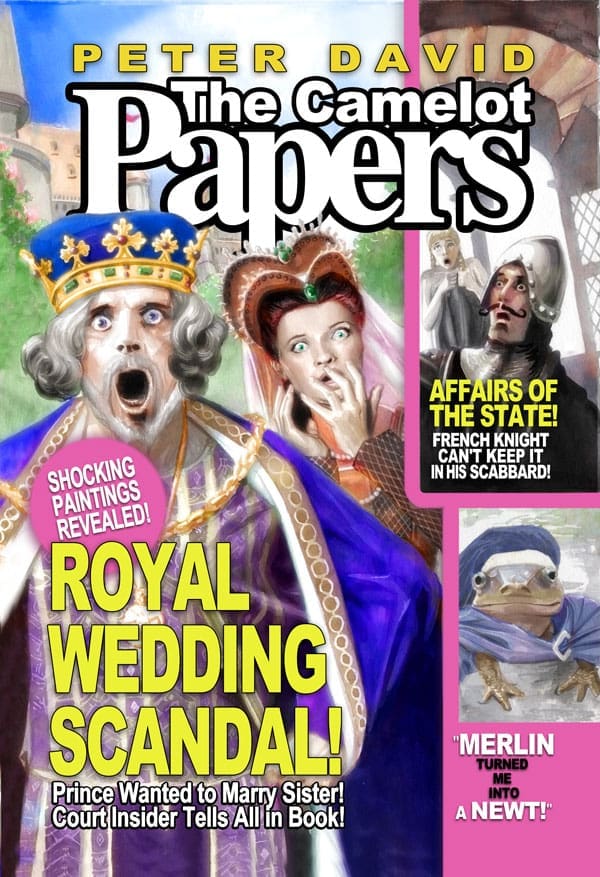
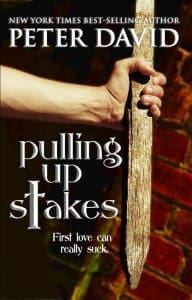
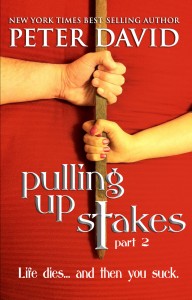
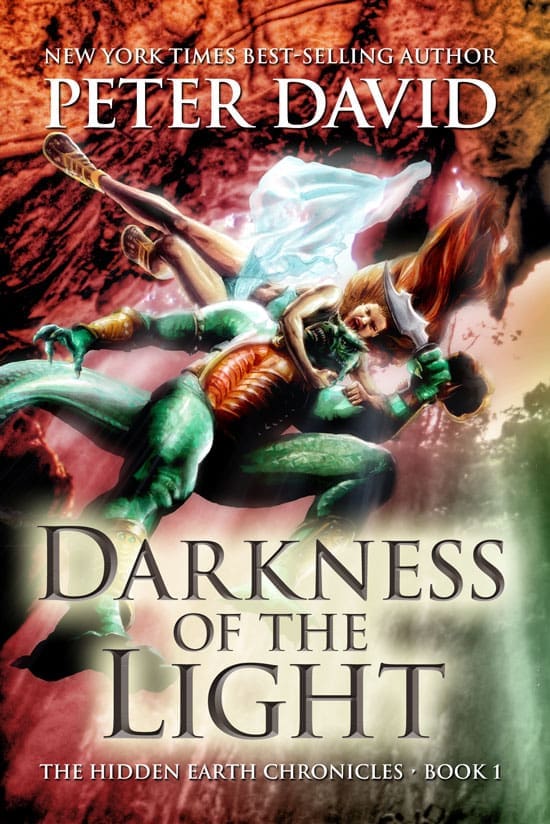
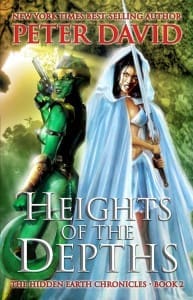
The sexism issue reminds me of a section of a sociology textbook I own about media and minorities.
It has about two pages devoted to Disney, but the case study I found most interesting was that of Aladdin. The book argued that the cartoon was fundamentally racist:
1) The movie’s heroes, Aladdin and Jasmine, both speak with perfect American accents. Aladdin is depicted as a good-looking, clean-shaven man.
2) The movie’s villains tend to have thick Arab accents, have beards on their faces, and ugly, exaggerated features, such as noses.
Thus, you have a not-so-subtle reinforcement of the belief that “American” things are good, and “foreign” things are evil.
The text also had some stuff about The Lion King reinforcing the normality of a patriarchal society, but I found the Aladdin stuff to be the most compelling.
Welcome to the wonderful world of new literary criticism, where the emphasis is the autonomy of the text (whatever the media is).
New Criticism argues that each text has a central unity. The responsibility of the reader is to discover this unity. The reader’s job is to interpret the text, telling in what ways each of its parts contributes to the central unity. The primary interest is in themes. A text is spoken by a persona (narrator or speaker) who expresses an attitude which must be defined and who speaks in a tone which helps define the attitude: ironic, straightforward or ambiguous. Judgements of the value of a text must be based on the richness of the attitude and the complexity and the balance of the text. The key phrases are ambivalence, ambiguity, tension, irony and paradox.
The reader’s analysis of these elements lead him to an examination of the themes. A work is good or bad depending on whether the themes are complex and whether or not they contribute to the central, unifying theme. The more complex the themes are and the more closely they contribute to a central theme (unity) the better the work.
Usually, the New Critics define their themes as oppositions: Life and death, good and evil, love and hate, harmony and strife, order and disorder, eternity and time, reality and appearance, truth and falsehood, emotion and reason, simplicity and complexity, nature and art. The analysis of a text is an exercise in showing how all of its parts contribute to a complex but single (unified) statement about human problems.
Feminist critical theory tends to go one of two ways – either the New Critic way (which both authors Peter David mentions went) or away from the autonomous and towards the autopoieic.
Er, yeah. *shrug* 🙂
-Kelly
For example, Trites hinges many of her arguments on the concept that, in the original, “(the) mermaid quests for a soul, but Disney’s mermaid, Ariel, quests for a mate.”
There are those, like myself, who don’t think an immortal soul exists. So if you went looking for it you’ll die before you find it because there is nothing there. However, you spend your life looking for love, you have a small chance of finding it. If you can find it, it is worth it… even if it is only for an instant.
I still liked The Black Cauldron better. 🙂
“Well, my eldest daughter– ten years old going on twenty-three– “
Heh. If my math is correct… she’s 23 now. Odd coincidence.
Regarding the genital symbolism, was I the only one who thought Grandma Willow in Pocahontas looked like one?
” The movie’s villains tend to have thick Arab accents”
Which willfuly ignores that the villian has an English accent, as he’s played by an English actor.
Lion King Critizims were that Scar was “clearly” gay because he says “to die for” and that the hyenas were “ghetto blacks and hispanics” because Whoopie Goldberg and Cheech played them.
Scavenger, you’ve prompted me to dig out the book.
“The 1989 release of Alladin caused particular concern since it was one of hte most important and celebrated of Disney releases. From the opening song, “Arabian Nights,” with its depiction of Arabian culture with racist overtones and popular stereotypes, to its portrayal of supporting characters as violent or cruel, the film manipulated an audience already primed by the media portrayal of the Gulf War. Racism is also evident in racially coded language and accents. The bad Arabs speak in thick foreign accents, while Jasmine and Alladin speak in standardized English.”
You’re right of course, it doesn’t mention the film’s main villain. Still, I find it to be a fairly good argument.
Regarding The Lion King, the book discusses the reinforcement of patriarchy, as well as accents.
I should note that this book is not trying to accuse Disney of deliberate racism; rather it is trying to show how the media often doesn’t realize the full implications of what they are portraying.
The book is Media and Minorities: Representing Diversity in Multicultural Canada by Augie Fleras and Jean Lock Kunz.
“Jeff Lawson, “The 1989 release of Alladin””
But the animated movie we’re all talking about was released in 1992, and spelled ‘Aladdin’.
Is this book referring to a different movie than the Disney one?
Nice catch on that one – I had thought that the date seemed fishy but didn’t check. I’m not sure how the authors could have screwed that up, but that’s what they said, and judging from their reference to the song, that’s definitely the movie they meant.
That certainly hurts the authors’ credibility, but I still think they have some good points.
You know, I can’t recall the title nor author for the Government Class textbook we used in high school. This’d be very late eighties, and the book itself was only a year or two old that spring, and the school in question was G. Ray Bodley High School in Fulton, a little town near Oswego and Syracuse, New York — waaaaaaaaaaaay upstate.
Anyhow, the one thing out of all my textbooks that *really* stuck with me was how horrifically unfactual this textbook’s examples were of “modern media”, during the discussion of the government oversight lobbyists. If only the authors had done some actual research, they might’ve convinced me (or, at least, kept our class from quite realizing how biased the entire textbook actually was). Alas for them, the primary example they chose to illustrate the “concerned parents'” point about a need for government controls was, in fact, the He-Man cartoon.
Now, I’ll be the first to agree that this cartoon had some problems. I’m not only the oldest of three kids, but I was also in the habit of babysitting, so I got to watch a LOT of this particular series … and read the comics … and make up my own stories to keep my charges amused … and there were books, too…. Anyhow, here’s a group of people who never notice their surroundings unless something’s jarringly discolored in it, and at least Clark Kent wears *glasses* for pity’s sake, and I’m waiting for the concerned parents to start talking about metaphorical steroid abuse by a confused teenage boy wearing a lot of pink.
Nope, they said the show’s too violent, and described an episode as an example. They got the name of the child-like character wrong (it’s “Orko”, not “Urka”!), they ignored the entire first act of the episode where plot and motivation originate, they thought “Urka” was a gadgeteer (Hello, he’s a wizard!), and they talk about He-Man using his sword to cut people. No, in the episode in question, He-Man used his sword to cut the ground, which rather improbably caused the formation of a crevasse, which led to a rock slide that buried what had already been clearly established as robotic automatons programmed by Today’s Villain.
Needless to say, I pointed out all of this in class, aloud, adding that most of us had younger siblings and neighbors and could go see that episode with them if we hadn’t already seen it, and if this chapter of the book is so unreliable, why should we believe anything else in the textbook?
Our teacher really didn’t like me, I suspect.
Anyhow, my longwinded point is, if a critique is going to be emphasizing a particular work, and the author gets several important details wrong — it’s time to start wondering if the author made up hir mind first and interpreted the work afterward so it’d fit that conclusion.
Sure, the male protagonist is clean-shaven. He’s a KID! He’s the point-of-insertion for male members of the target audience. Let’s look at two good-guy ADULT male characters: Jasmine’s father, the Sultan, has a full beard and mustache. The Genie, Aladdin’s good buddy, also has a beard, though no mustache. So the argument that cleanshaven=Anglo=good while hairy=Arab=bad fails the “Did the critic actually watch the whole movie?” test.
Next we can look at “racially coded” language. I’d first like to know how Disney is supposed to provide a moderate undertone of exotic setting for a young, American audience, all without 1) having the main characters speak VERY CLEAR and easy to comprehend English; 2) occasionally throwing into the background sights, sounds, and references that the kids can identify as “Arabic” of some sort. We know that the play Annie takes place during the Depression because of the stereotypical buildings, clothes, and 1930s-era terminology occasionally used by the characters; why shouldn’t the same be used in Aladdin?
Personally, *I* think your authors there were predisposed by the recent Gulf War to be extra-sensitive to any whiff of racism against Arabic cultures, and so they were unable to view the movie in a truly unbiased light. It’d be interesting to see whether they’ve picked out any movies as examples of how the others ought’ve been done. No accents? Too many accents? The wrong accents? All seem to be wrong choices, so far, so what’s the correct choice?